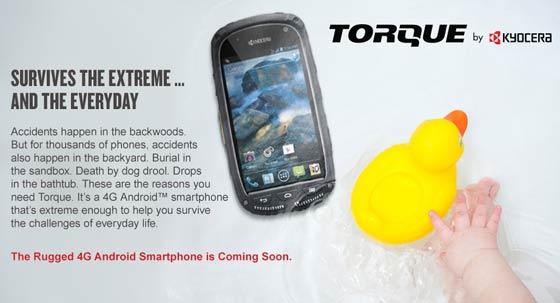Popular TV wilderness survivor and adventurer Bear Grylls has put his name behind a smartphone: the Kyocera Torque. As you might expect it’s a handset with a long list of specs detailing its resistance to the elements and various natural phenomena. However the internal smartphone specs are not as impressive, you would probably call it middle-of-the-road as far as tech specs are concerned.
The Kyocera Torque has quite a long list of tough specifications. It is water, dust, shock, vibration, solar radiation, humidity, and extreme temperature proof. Furthermore it exceeds ruggedized construction standards like military spec 810G and IP(Ingress Protection)67. In practical terms this means it can withstand heavy dust for six hours, being submerged in 3ft of water for 30 minutes and being dropped from up to 26ft high.
Let’s look at the tech spec of the smartphone inside:
- Processor: dual-core 1.2-GHz Qualcomm Snapdragon
- RAM: 1GB
- Storage: 4GB built-in, microSD card slot
- Screen: 4-inch, 800-by-480-pixel display
- Cameras: 5MP rear camera and a 1.3MP on the front
- OS: Android 4.0 ICS
- Battery: 2500mAh
- Communications: 4G LTE
- Audio: Smart Sonic Receiver ceramic speaker
That last specification detail, the Smart Sonic Receiver, is quite an interesting one. Kyocera has eliminated the traditional open speaker design which goes next to your ear. This ceramic speaker works through contact with your skin. You can touch the top of the phone on any part of your head to hear the call (even when using hearing protectors) according to Digital Trends hands-on session, where their reporter listened to music through his forehead.
The Kyocera Torque isn’t the prettiest of designs but it is also not too garish or big and heavy. At the moment we only have US pricing details and availability; $99 on a Sprint 2 year contract. UK-based survivalists will just have to wait and hope that we get a consignment parachuted into Blightly in the coming months.














